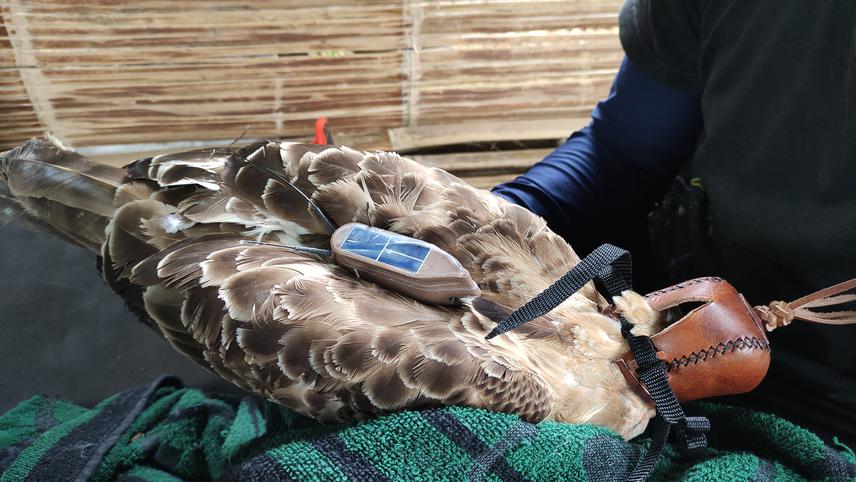Cici Nurfatimah
Javan Hawk-Eagle (Nisaetus bartelsi) population in Indonesia keep declining along with rapid changes in land use that have an impact on the loss of natural habitats that should be a place to live for these raptors. Nowadays, a limited number of Javan Hawk-Eagle can only be found in sparse habitat patches that severely fragmented with each other. Many conservation efforts have been done to protect this endangered species and maintain the population sustainability. The lack of natural habitat remaining is one of the obstacles that must be overcome as soon as possible before these animals become extinct. Restoring or even building new habitats is one of the answers to this problem. But to be able to provide a comfortable home for them, we must be able to understand what they need and how they behave in using their home.

PTTs mounted on the Javan Hawk-Eagle with the backpack method. © Cici Nurfatimah.
Movement observation for Javan Hawk-Eagle mostly conducted by direct observation or radio telemetry. This resulted in various interpretation of home range size. If we able to detect the precise movement and landscape structure characteristic in fine scale then we can use it to develop the best scenario for restoring its habitat in degraded landscape and build corridor ecology in between habitat patches.
This project will be conducted in Mount Halimun Salak National Park in collaboration with the national park manager and Javan Hawk-Eagle Sanctuary Center (PSSEJ). We will tag an adult and a captive-bred juvenile with GPS satellite transmitter. For the adult we will observe local movements include foraging, courting, and general maintenance activities. Meanwhile, for the juvenile we will observe its movement after reaching independent age from their parents and the process of building new home range.
The purpose of this project is to determine whether the use of satellite-based tracking technology can help understand the spatial ecology of the Javan Hawk-eagle in its natural habitat. In particular, this study aims to obtain more detailed information about the landscape structure and matrix that supports the movement of the Javan Hawk-Eagle. It is hoped that the results of this study can be used to formulate conservation management and restoration plans based on the ecology of the Javan Hawk-Eagle movement.